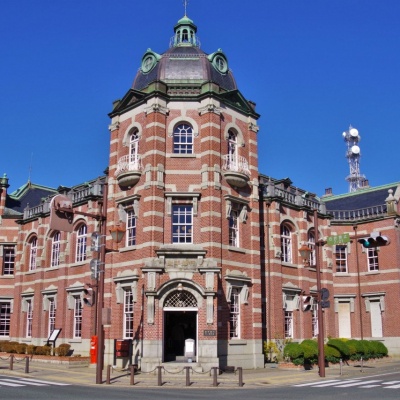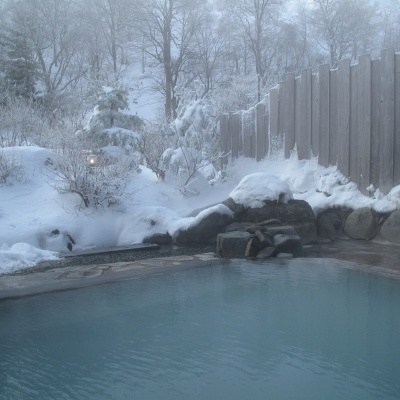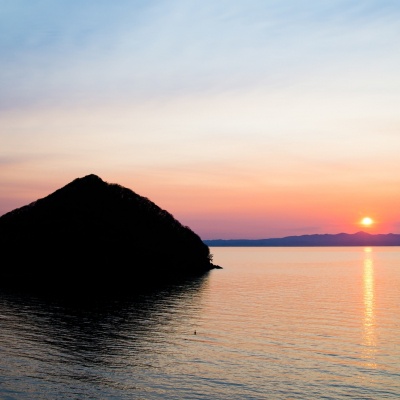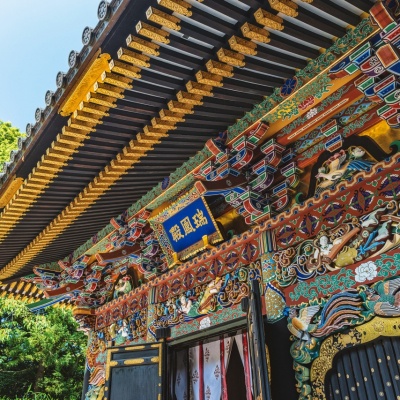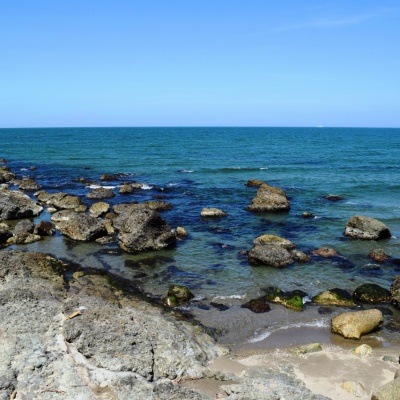Nature and hot springs in Aomori and Iwate (3 days / 2 nights)
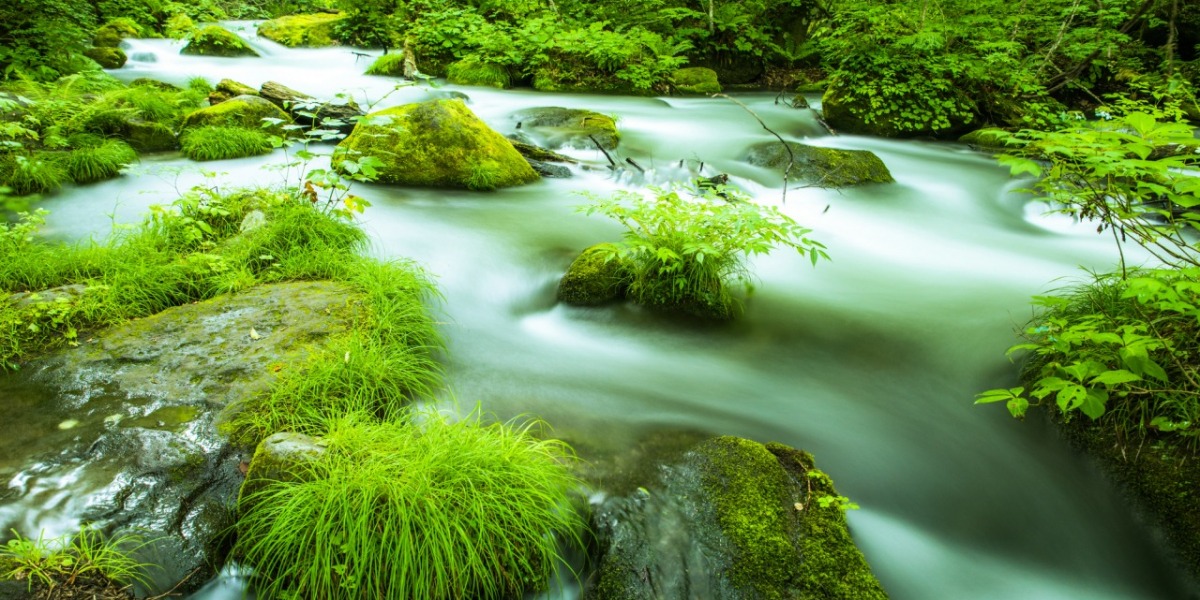
Nature and hot springs in Aomori and Iwate (3 days / 2 nights)
START
Day1
Lake Towada
A mystical deep blue lake reflecting blue skies and the surrounding mountains on its surface
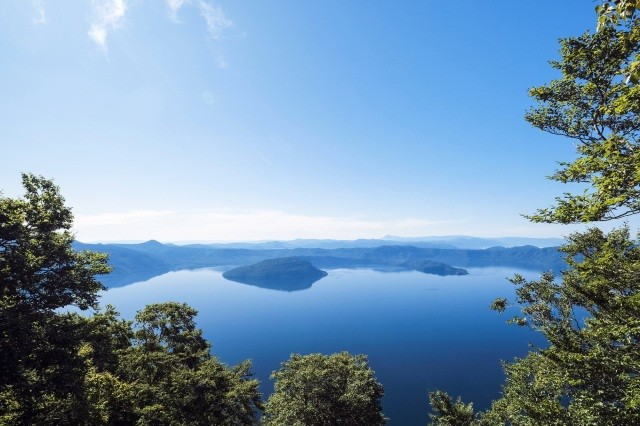
The mystical Lake Towada offers beautiful panoramic views reflecting the surrounding scenery of blue skies, verdant greens and a riot of autumnal colours on its serene surface.
Located in the Towada-Hachimantai National Park, Lake Towada is a crater lake rimmed by the crater’s mountainous edge and is the source of the Oirase Mountain Stream. The lake is 46km in circumference and has a maximum depth of 327m making it the third deepest in Japan. Crater lakes are topographic depressions formed by massive volcanic eruptions and subsequently filled with rain water over long periods of time. Come and be overwhelmed by this creation of enormous volcanic energy and its million years of history! The lake is known as the “Mystic Lake” as it never freezes during winter despite its location in Japan’s northern highlands.
The lake is surrounded by a natural grove of mainly beech trees. The seasonal scenery is enchanting with spring flowers, verdant summer greens, vibrant autumnal colours and winter woods blanketed with snow. The best time to enjoy verdant greens is from May to June while autumn leaves are at their best from mid to late October. Visitors can also enjoy canoeing and pleasure boat rides from April to November. Icicles and frozen waterfalls can be seen while enjoying a winter walk in snowshoes or snow ramblers (a kind of free-heel ski) from January to March.
Located on the Nakayama Peninsula jutting out into Lake Towada, Towada Shrine is a spiritual place worshipping the dragon god of water. Legend has it that a trainee monk who defeated a dragon was enshrined here as an incarnation of the blue dragon.
Visitors should be sure to enjoy the local specialties of kokanee salmon and pond smelt as well as some of the locally produced wines!
Located in the Towada-Hachimantai National Park, Lake Towada is a crater lake rimmed by the crater’s mountainous edge and is the source of the Oirase Mountain Stream. The lake is 46km in circumference and has a maximum depth of 327m making it the third deepest in Japan. Crater lakes are topographic depressions formed by massive volcanic eruptions and subsequently filled with rain water over long periods of time. Come and be overwhelmed by this creation of enormous volcanic energy and its million years of history! The lake is known as the “Mystic Lake” as it never freezes during winter despite its location in Japan’s northern highlands.
The lake is surrounded by a natural grove of mainly beech trees. The seasonal scenery is enchanting with spring flowers, verdant summer greens, vibrant autumnal colours and winter woods blanketed with snow. The best time to enjoy verdant greens is from May to June while autumn leaves are at their best from mid to late October. Visitors can also enjoy canoeing and pleasure boat rides from April to November. Icicles and frozen waterfalls can be seen while enjoying a winter walk in snowshoes or snow ramblers (a kind of free-heel ski) from January to March.
Located on the Nakayama Peninsula jutting out into Lake Towada, Towada Shrine is a spiritual place worshipping the dragon god of water. Legend has it that a trainee monk who defeated a dragon was enshrined here as an incarnation of the blue dragon.
Visitors should be sure to enjoy the local specialties of kokanee salmon and pond smelt as well as some of the locally produced wines!
Oirase Mountain Stream
With two stars in the Michelin Green Guide, this pristine stream is one of the most popular scenic locations in Tohoku

Oirase Mountain Stream is one of the most popular attractions in Tohoku and has been awarded two stars in the Michelin Green Guide. The stream stretching for 14km is home to boundless scenic beauty. The journey between viewing highlights can be made by car or bus however walking the route is particularly recommended in order to enjoy this spectacle to its fullest, the extra time and effort are highly rewarded! While walking through the natural green tunnels of the trail, visitors can appreciate the beauty of the vibrant mosses and foliage, breathe in the forest air, and be dazzled by the dance of the sunshine filtering through the overhead foliage on the sparkling water surface.
Photography enthusiasts in particular should walk from the lower to the upper stream to find the ideal vantage points of the natural light shining on the stream and surrounding foliage. The trail is an easy walk without any challenging climbs. The four-hour full trekking route from the pleasure boat pier of Lake Towada (Nenokuchi bus stop) to Yakeyama bus stop close to the Oirase Stream Museum is as follows:
Nenokuchi - (20min) - Choshi Otaki - (50min) - Kumoi no Nagare - (30min) - Kumoi no Taki - (30m) - Makado Iwa - (15min) – Ishigedo - (70min) - Yakeyama
The best time to enjoy the area’s verdant greens is from mid-May to mid-June. Gorgeous autumn leaves are at their best from mid to late October. Journey times may be slower due to traffic congestion during these peak seasons. Beat the crowd by starting your trek in the early morning and you will also have the chance to see the fantastic morning dews sparkling in the sunshine filtering through the foliage.
Photography enthusiasts in particular should walk from the lower to the upper stream to find the ideal vantage points of the natural light shining on the stream and surrounding foliage. The trail is an easy walk without any challenging climbs. The four-hour full trekking route from the pleasure boat pier of Lake Towada (Nenokuchi bus stop) to Yakeyama bus stop close to the Oirase Stream Museum is as follows:
Nenokuchi - (20min) - Choshi Otaki - (50min) - Kumoi no Nagare - (30min) - Kumoi no Taki - (30m) - Makado Iwa - (15min) – Ishigedo - (70min) - Yakeyama
The best time to enjoy the area’s verdant greens is from mid-May to mid-June. Gorgeous autumn leaves are at their best from mid to late October. Journey times may be slower due to traffic congestion during these peak seasons. Beat the crowd by starting your trek in the early morning and you will also have the chance to see the fantastic morning dews sparkling in the sunshine filtering through the foliage.
Sukayu Hot spring
Touji Inn in Hakkouda
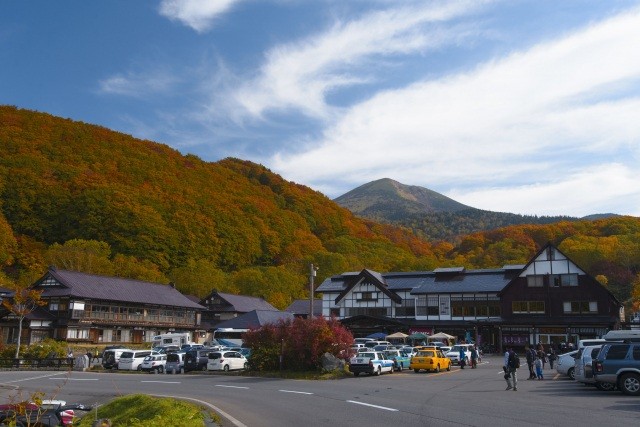
Sukayu Onsen is located in Towada-Hachimantai National Park. It was designated as “National Recreational Hot Spring Resort No. 1” in 1954 in recognition of its outstanding hot spring benefits, abundant spring water, spacious accommodations, pure natural environment, convenient transportation, and low rates. The famous “Hiba Senninburo” baths are 160 tatami in size, and the culture of mixed bathing still exists today (women-only hours are available in the morning and evening). A variety of rooms are available, from quaint Touji rooms to Western-style rooms with beds, where you can relax and unwind from the daily grind.
The Hakkoda Ropeway is located in the vicinity of Sukayu, where you can enjoy the magnificent nature of Hakkoda (Hakkoda mountain range) and enjoy the spectacular view that changes with each season: fresh greenery in spring, alpine flora in summer, autumn leaves in fall, and tree ice in winter. The Hakkoda ropeway is open from mid-May for fresh green leaves, August for summer skiing, late September to mid-October for autumn leaves, late November to mid-May for winter skiing, and January to late February for juhyo (ice covered trees).
Hakkoda is the general name for the mountain range in the northern part of Towada-Hachimantai National Park, consisting of more than 10 peaks with the main peak, Hakkoda-dake, at the center. The area is crowded with climbers from spring through fall, as wetlands are found everywhere and the area is a treasure trove of alpine flora.
Like Sangayu Onsen, Jogakura Bridge is located in Towada-Hachimantai National Park. With a total length of 360 meters and arch span of 255 meters, it is Japan's largest upper arch bridge. The view of the Jogakura Stream from a height of approximately 120 meters is beautifully colored in autumn, with the trees overlapping each other, providing a magnificent view of the Hakkouda mountain range throughout the four seasons.
The Hakkoda Ropeway is located in the vicinity of Sukayu, where you can enjoy the magnificent nature of Hakkoda (Hakkoda mountain range) and enjoy the spectacular view that changes with each season: fresh greenery in spring, alpine flora in summer, autumn leaves in fall, and tree ice in winter. The Hakkoda ropeway is open from mid-May for fresh green leaves, August for summer skiing, late September to mid-October for autumn leaves, late November to mid-May for winter skiing, and January to late February for juhyo (ice covered trees).
Hakkoda is the general name for the mountain range in the northern part of Towada-Hachimantai National Park, consisting of more than 10 peaks with the main peak, Hakkoda-dake, at the center. The area is crowded with climbers from spring through fall, as wetlands are found everywhere and the area is a treasure trove of alpine flora.
Like Sangayu Onsen, Jogakura Bridge is located in Towada-Hachimantai National Park. With a total length of 360 meters and arch span of 255 meters, it is Japan's largest upper arch bridge. The view of the Jogakura Stream from a height of approximately 120 meters is beautifully colored in autumn, with the trees overlapping each other, providing a magnificent view of the Hakkouda mountain range throughout the four seasons.
Day2
Hakkoda Ropeway
Enjoy magnificent views of the mountains and natural surroundings from this incredible ropeway!
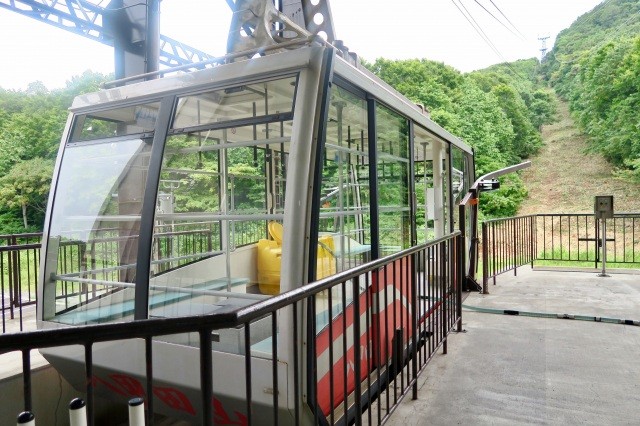
The 2.5km Hakkoda Ropeway offers superb views of the natural scenery of the Hakkoda Mountain Range as it climbs 650m up Mount Tamoyachi. Seasonal spectacles include fresh verdant greens in mid-May, pretty alpine flowers from mid-May to mid-August, vibrant autumnal colours from late September to mid-October and brilliant hoar frosts in January and February. Year-round skiing is available with the best conditions available from late November to mid-May.
Visitors can enjoy panoramic views stretching as far as the city of Aomori, Mutsu Bay, Tsugaru Peninsula, Shimokita Peninsula and Mount Iwaki on fine days.
The ropeway runs throughout the year. A 10-minute ride takes visitors to Summit Park station at the top of Mount Tamoyachi. The surrounding area is dotted with ponds and marshes and is home to a variety of alpine plants. A range of trails is available for trekkers of all levels from a 30-minute walking path to a challenging 4-hour climbing course.
After a long walk, relax in a hot spring bath with 300 years of history at Sukayu Onsen. There are mountain trails leading to Sukayu Onsen from Summit Park station. Be sure to wear trainers or climbing boots to follow these trails. A walk along the Kenashi Paradise Line takes 2 hours and 30 minutes and a trek along the Odake Climbing Course takes 4 hours.
A thematic journey in the Tohoku region:Snowmelt
Visitors can enjoy panoramic views stretching as far as the city of Aomori, Mutsu Bay, Tsugaru Peninsula, Shimokita Peninsula and Mount Iwaki on fine days.
The ropeway runs throughout the year. A 10-minute ride takes visitors to Summit Park station at the top of Mount Tamoyachi. The surrounding area is dotted with ponds and marshes and is home to a variety of alpine plants. A range of trails is available for trekkers of all levels from a 30-minute walking path to a challenging 4-hour climbing course.
After a long walk, relax in a hot spring bath with 300 years of history at Sukayu Onsen. There are mountain trails leading to Sukayu Onsen from Summit Park station. Be sure to wear trainers or climbing boots to follow these trails. A walk along the Kenashi Paradise Line takes 2 hours and 30 minutes and a trek along the Odake Climbing Course takes 4 hours.
A thematic journey in the Tohoku region:Snowmelt
Special History Site Sannai Maruyama Ruins

The Sannai-Maruyama Site is one of Japan's largest early to middle Jomon Period sites. The site was designated as a Special Historic Site by the national government in November 2000. In July 2021, the "Jomon Monuments of Hokkaido and the Northeast" including the Sannai-Maruyama Site were registered as a World Heritage Site.At the Jomon Jiyukan, excavated artifacts are displayed in the permanent exhibition room "SANMARU MUSEUM," a Jomon Theater shows films introducing the ruins, and a hands-on workshop allows visitors to experience making things (for details, see "Sannai-Maruyama Site Hands-on Workshop"). The Jomon Theater shows a video introducing the ruins.Volunteer guides are also available to show visitors around the ruins.
Hanamaki Onsenkyo
A variety of hot springs along a river surrounded by mountains

Hanamaki Onsenkyo consists of 12 hot springs allowing visitors to enjoy a variety of hot spring waters. From open-air baths facing mountain streams to hidden inns nestled along the river gorge, each hot spring has its own character and a range of accommodation options are available. Dai Onsen has a calm and nostalgic atmosphere, while Osawa Onsen has a rich history and open-air baths with breath-taking views. Onsen hopping is the perfect way to compare and find your favorite one!
Hanamaki is the hometown of Kenji Miyazawa, a great poet and writer of fairy tales and the town has a number of locations with connections to the author. The rose garden at Hanamaki Onsen fascinates visitors each season with its collection of over 450 types of roses in vast grounds of 16,500m2 and features a brilliant floral sundial designed by Miyazawa. Kamabuchi Waterfall along the Dai river appeared in one of his works and the surrounding trail is delightful to stroll around. Enjoy a leisurely walk just as Kenji did while listening to the murmuring streams!
The Miyazawa Kenji Memorial Museum and Miyazawa Kenji Fairy Tale Village are in the neighbourhood. There is also a museum dedicated to Kotaro Takamura, a renowned poet who loved Hanamaki.
Hanamaki Onsen is a one-hour drive from Chusonji Temple and Genbikei Gorge. Come and refresh yourself with a relaxing hot spring bath after a big day out!
A thematic journey in the Tohoku region:Hot springs
Hanamaki is the hometown of Kenji Miyazawa, a great poet and writer of fairy tales and the town has a number of locations with connections to the author. The rose garden at Hanamaki Onsen fascinates visitors each season with its collection of over 450 types of roses in vast grounds of 16,500m2 and features a brilliant floral sundial designed by Miyazawa. Kamabuchi Waterfall along the Dai river appeared in one of his works and the surrounding trail is delightful to stroll around. Enjoy a leisurely walk just as Kenji did while listening to the murmuring streams!
The Miyazawa Kenji Memorial Museum and Miyazawa Kenji Fairy Tale Village are in the neighbourhood. There is also a museum dedicated to Kotaro Takamura, a renowned poet who loved Hanamaki.
Hanamaki Onsen is a one-hour drive from Chusonji Temple and Genbikei Gorge. Come and refresh yourself with a relaxing hot spring bath after a big day out!
A thematic journey in the Tohoku region:Hot springs
Day3
Genbikei Gorge
Enjoy the scenic beauty of the gorge along with the local specialty “Flying Dango”!

Genbikei Gorge is a beautiful 2km stretch of gorge along the Iwai River flowing from Mount Kurikoma. Visitors can enjoy the dynamic views of the waterfalls and unique rock formations created by the river’s erosion as they stroll along the riverside.
A 30-minute walking path along the slowly flowing river gives visitors a sense of the tranquil scenery of the emerald green water and its murmuring streams. While the 70-minute walking path around the rough rapids of the upper stream provides views of uniquely shaped ruts formed by pebbles whirling around in the turbulent flow of water.
Along with the breath-taking views, many people come to the gorge for the local specialty of Genbikei, the popular Flying “Kakko Dango” (sweet sticky rice balls). There is a gazebo along the gorge where visitors can place an order via a hanging basket from a quaint shop on the other side of the gorge. Place your money in the basket hanging from the cable and knock the board with the wooden hammer provided to let the shop know an order is on its way. The shop staff then pulls the basket across the gorge and send it flying back to you with a box of Dango and a cup of green tea. Be sure to have your camera ready to catch this unique experience of the Flying Dango on its zip-wire!
There is a roadside station with restaurant facilities nearby and the walking trails are well-managed with resting places along the way for the best views of the gorge. Our recommendation is to combine your visit to Genbikei with a trip to the other famous gorge nearby, Geibikei, and compare their beauty!
A thematic journey in the Tohoku region:Riverside
A 30-minute walking path along the slowly flowing river gives visitors a sense of the tranquil scenery of the emerald green water and its murmuring streams. While the 70-minute walking path around the rough rapids of the upper stream provides views of uniquely shaped ruts formed by pebbles whirling around in the turbulent flow of water.
Along with the breath-taking views, many people come to the gorge for the local specialty of Genbikei, the popular Flying “Kakko Dango” (sweet sticky rice balls). There is a gazebo along the gorge where visitors can place an order via a hanging basket from a quaint shop on the other side of the gorge. Place your money in the basket hanging from the cable and knock the board with the wooden hammer provided to let the shop know an order is on its way. The shop staff then pulls the basket across the gorge and send it flying back to you with a box of Dango and a cup of green tea. Be sure to have your camera ready to catch this unique experience of the Flying Dango on its zip-wire!
There is a roadside station with restaurant facilities nearby and the walking trails are well-managed with resting places along the way for the best views of the gorge. Our recommendation is to combine your visit to Genbikei with a trip to the other famous gorge nearby, Geibikei, and compare their beauty!
A thematic journey in the Tohoku region:Riverside
Lunch at around JR Ichinoseki station
Ichinoseki’s Historic Mochi Cuisine

Ichinoseki city in Iwate and the surrounding area has a long history of Mochi (sticky rice cake) thanks to the region’s crops of excellent sticky rice. The locals say that over 300 varieties of Mochi dishes are available in the region including “Mochi Honzen” dating back to the Edo period when the Date clan ruled the region. Honzen cuisine is a formal meal served on a personal tray and “Mochi Honzen” is a multi-course meal with a variety of Mochi dishes prepared in a ritualised style. A wide range of Mochi dishes are available including sweets, savoury side dishes and fusion dishes combining Mochi with international cuisine.
Search Restaurants
Search Restaurants
Geibikei Gorge
Enjoy the picturesque scenery of this gorge often compared to classical landscape paintings!
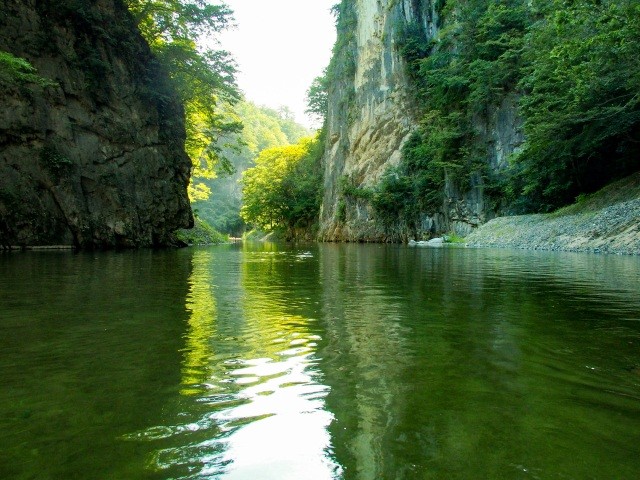
Geibikei Gorge is an officially recognised national natural monument and is listed as one of the 100 greatest landscapes of Japan. A 2km stretch of limestone cliffs rises over 50m on either side of the Satetsu River.
River tours are available through the gorge guided by boatmen propelling their boats with bamboo poles, an experience unique in all of Japan. The boatmen’s traditional singing harmonises beautifully with murmuring streams and adds a particular charm to the tour. Pets are allowed to travel with you on board and passengers can also enjoy feeding the fish swimming elegantly by in the clear waters.
Before returning down the river passengers can get out of the boat at the turning point for a walk along the gorge. The walk features a rock known as the Lion’s Nose, from which the name Geibikei originated, and also a famous cavity in the cliff on the other side of the gorge. Visitors try their luck by throwing “lucky stones” into the cavity in order to make a wish come true!
It is famous for its scenic beauty throughout the four seasons. Visitors can enjoy fresh greenery in spring, flowers such as wisteria, mountain lilies, and geibisekishou, and vivid autumn leaves, as well as an ink painting-like scene in winter, and can enjoy “Kotatsu-bune”, a boat ride in which visitors enjoy snowy scenery while eating hot pots. It is a popular spot, and is expected to be crowded, especially during the autumn foliage season. It is recommended to go early in the morning.
Another beautiful gorge in the town of Genbikei is a 40-minute drive from here. Why not combine your visit to Geibikei with a trip to Genbikei and compare their beauty!
A thematic journey in the Tohoku region:Riverside
River tours are available through the gorge guided by boatmen propelling their boats with bamboo poles, an experience unique in all of Japan. The boatmen’s traditional singing harmonises beautifully with murmuring streams and adds a particular charm to the tour. Pets are allowed to travel with you on board and passengers can also enjoy feeding the fish swimming elegantly by in the clear waters.
Before returning down the river passengers can get out of the boat at the turning point for a walk along the gorge. The walk features a rock known as the Lion’s Nose, from which the name Geibikei originated, and also a famous cavity in the cliff on the other side of the gorge. Visitors try their luck by throwing “lucky stones” into the cavity in order to make a wish come true!
It is famous for its scenic beauty throughout the four seasons. Visitors can enjoy fresh greenery in spring, flowers such as wisteria, mountain lilies, and geibisekishou, and vivid autumn leaves, as well as an ink painting-like scene in winter, and can enjoy “Kotatsu-bune”, a boat ride in which visitors enjoy snowy scenery while eating hot pots. It is a popular spot, and is expected to be crowded, especially during the autumn foliage season. It is recommended to go early in the morning.
Another beautiful gorge in the town of Genbikei is a 40-minute drive from here. Why not combine your visit to Geibikei with a trip to Genbikei and compare their beauty!
A thematic journey in the Tohoku region:Riverside
GOAL

